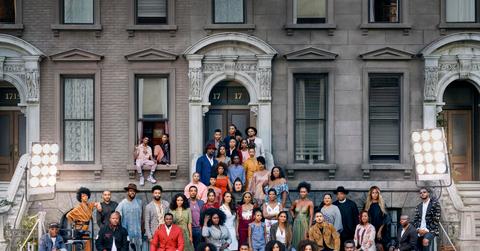
Black Hollywood
The Little Black Movie That Could: Why Hollywood Ignores Black Films
By Kaylin YoungSept. 20 2018, Updated 1:14 a.m. ET
I saw Crazy Rich Asians a few weeks ago and I am still astonished. Everything from the film to the dialogues to the fashions was diverse with color – and so was the audience. Crazy Rich Asians is the second film by a major Hollywood studio to feature an all-Asian cast… ever. Yet, not only Asians were anxious to fill theaters nationwide.
As I looked around the dimly-lit theater to the Caucasian couple holding hands beside me, the Black mother-daughter duo sharing popcorn, and an Asian friend group giggling a few rows up, I couldn’t fight the simultaneous heart-wrenching and heart-warming feeling. The film was beautiful, but the diversity of the audience was a continued distraction. It was beautiful to see so many people supporting a film that did not explicitly represent them, but it made me wonder:
Why don’t other races do this for black movies?
Films starring a majority African-American cast or featuring an African-American lead character have long been labeled “black movies”, implying they are created only for black audiences. Researchers at the University of Milano-Bicocca and the University of Toronto Scarborough have called this the “Racial Empathy Gap”, which identifies the idea that viewers lack a sense of empathy or compassion when they see a film with characters outside of their own race. However, with so few minorities in mainstream movies, this can never be fully examined. Producers don’t want to cast minorities in their roles out of the fear that white audiences will assume the film is ‘not for them’, but White audiences often feel it’s ‘not for them’ because they rarely see minorities in those roles. The cycle is neverending.

Hollywood has perpetuated the idea that blackness doesn’t sell, however, statistics have proven the exact opposite. In Summer 2017, the world experienced the genius of Girls Trip. This black-written and black-casted comedy became the little engine that could – or “the little black movie that could.” With a $20 million budget, the film didn’t only double that at the box office… Girls Trip grossed seven times more than its budget, making it the highest-grossing film of the summer and the first time a film by an African-American female screenwriter crossed the $100 million mark. These numbers proved to an underestimating Hollywood that blackness does sell.
Collectively, black Hollywood stood to their feet to applaud the job of the film, but Gabrielle Union knows that more work needs to be done for all of Hollywood to see the validity in these creations.
Summer blockbusters like Mission Impossible: Fallout and Oceans 8 brought out viewers of all colors, but Blackkklansman and Superfly did not receive the same amount of diverse love. Minorities don’t complain because we are grateful for the representation, but since there are so few films with leads that look like us, we also purchase our tickets for “white films.”
Hopefully, as Hollywood awakens to the brilliance of black creation, people of different races will learn to appreciate art from people who don’t look like them.

